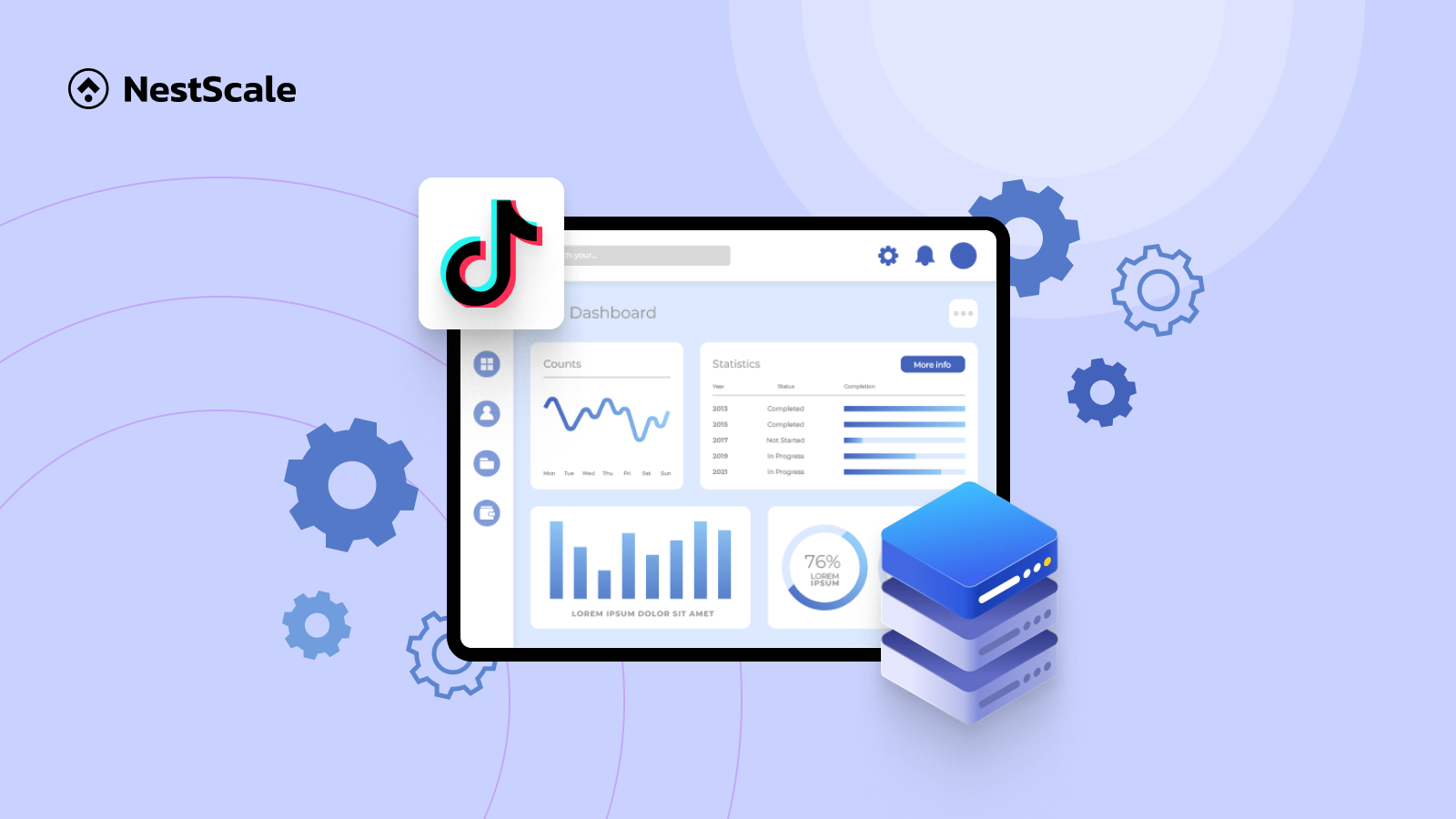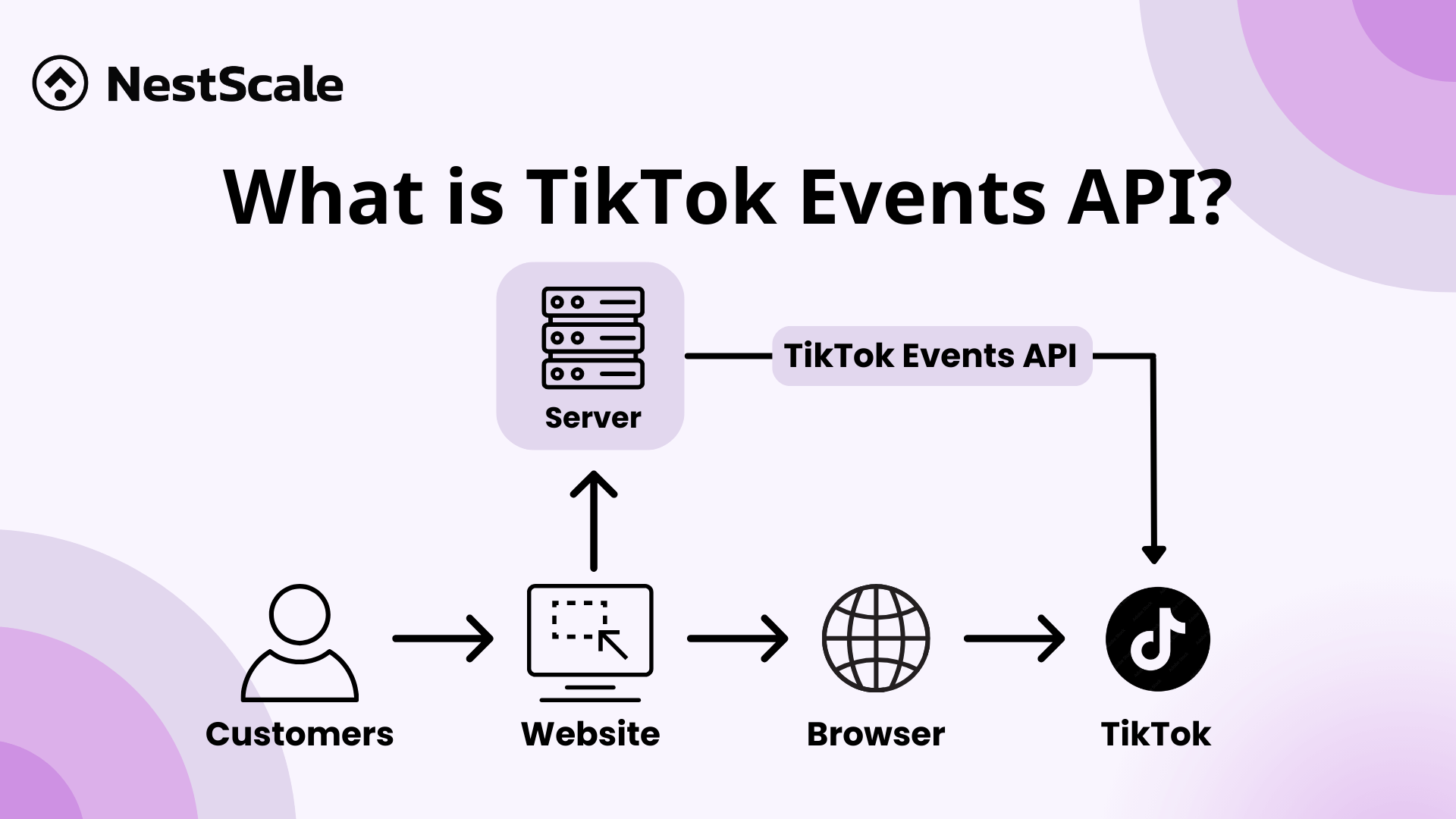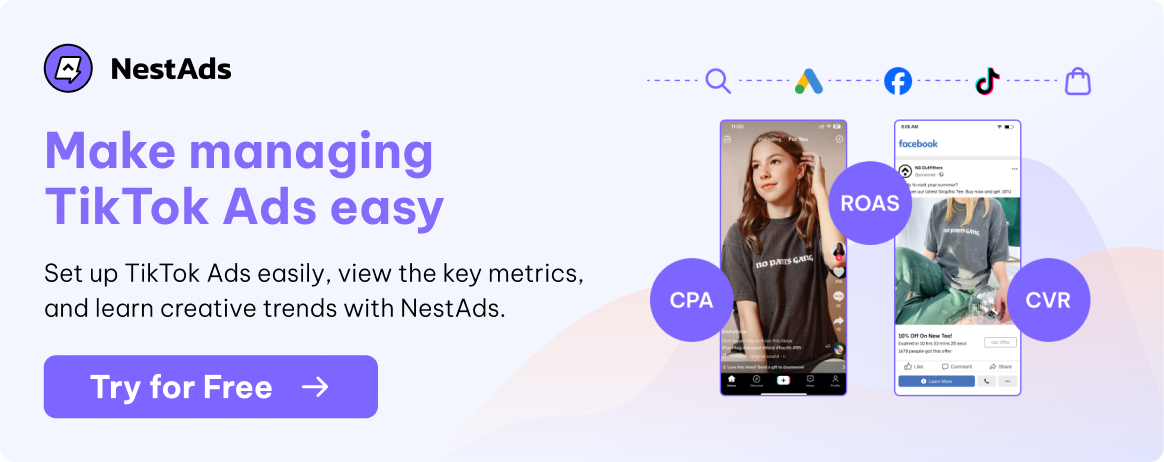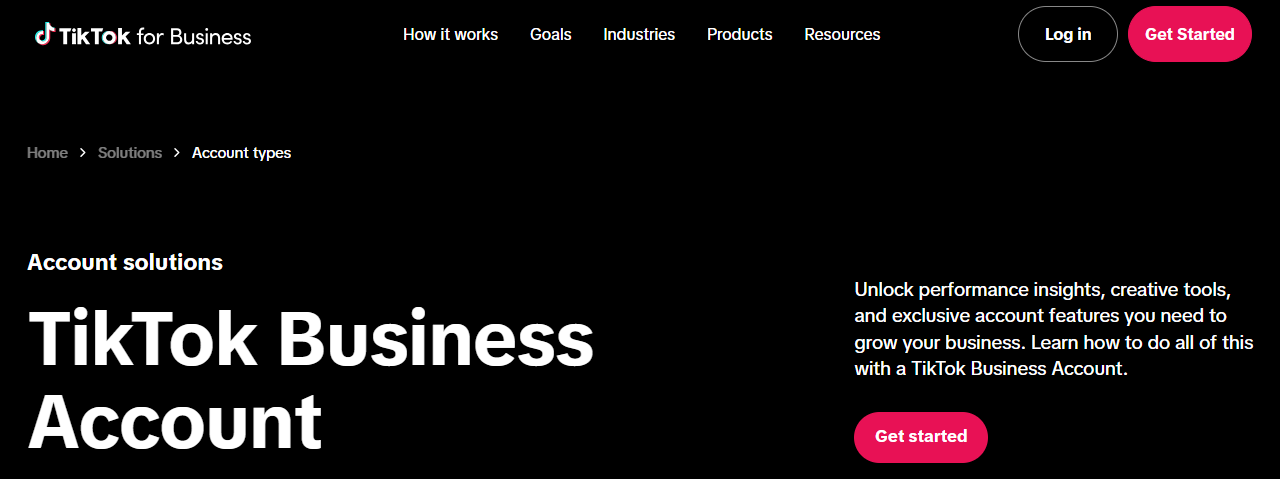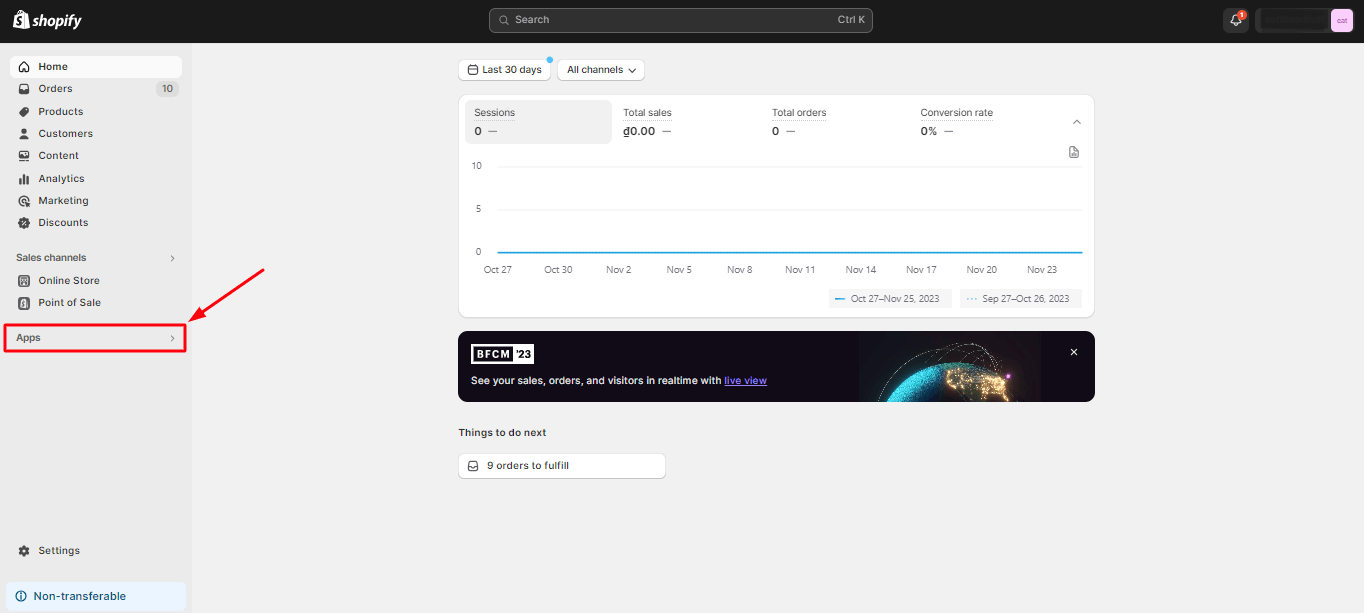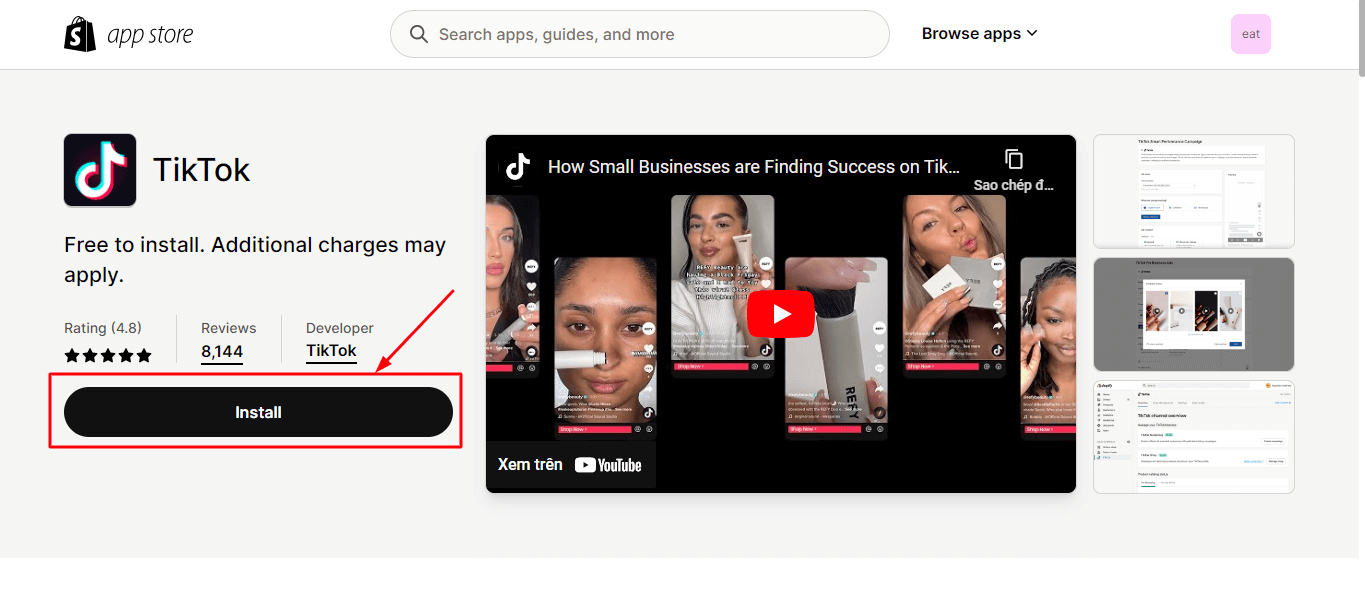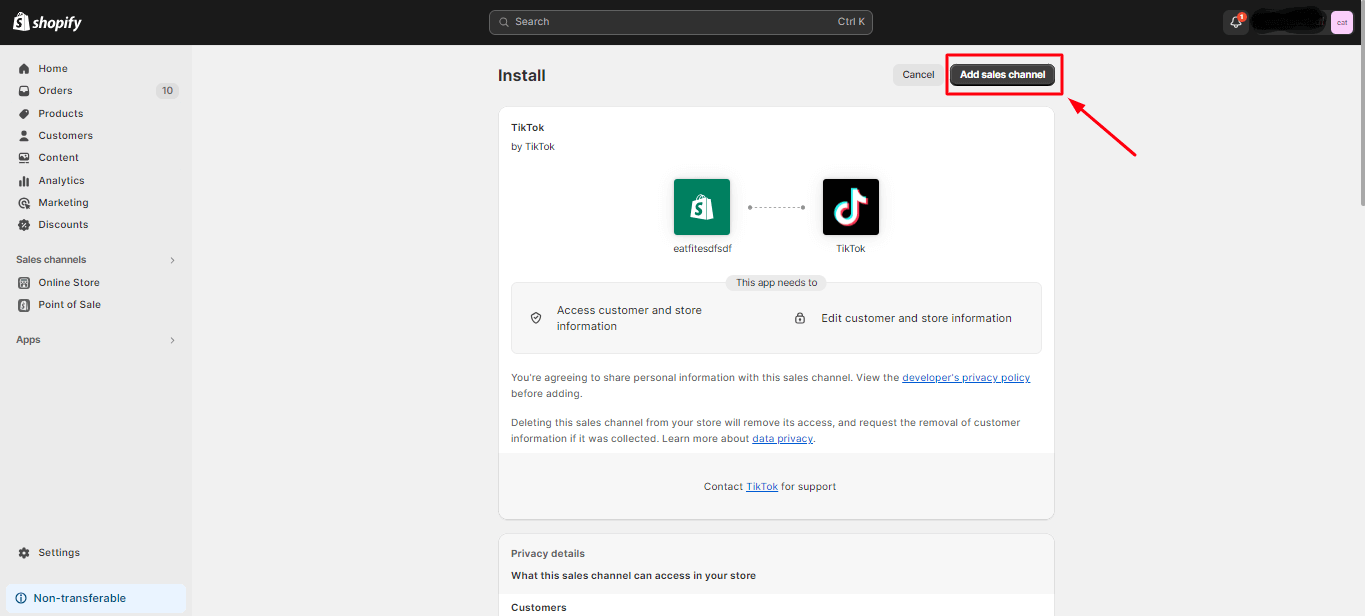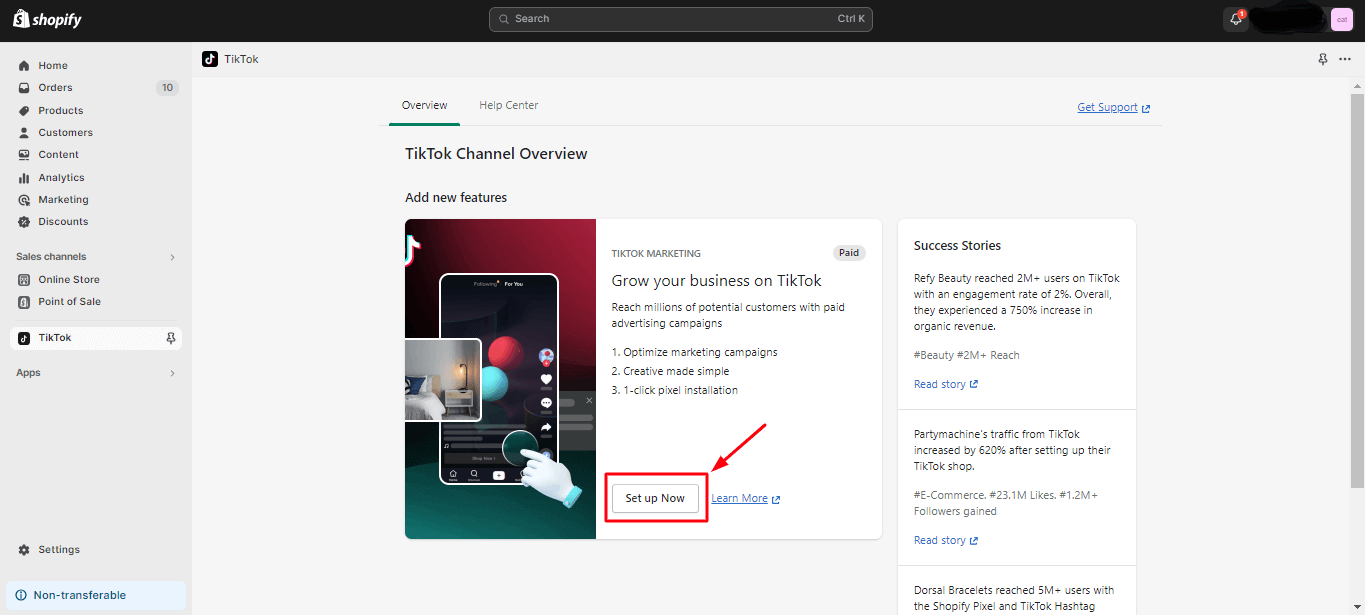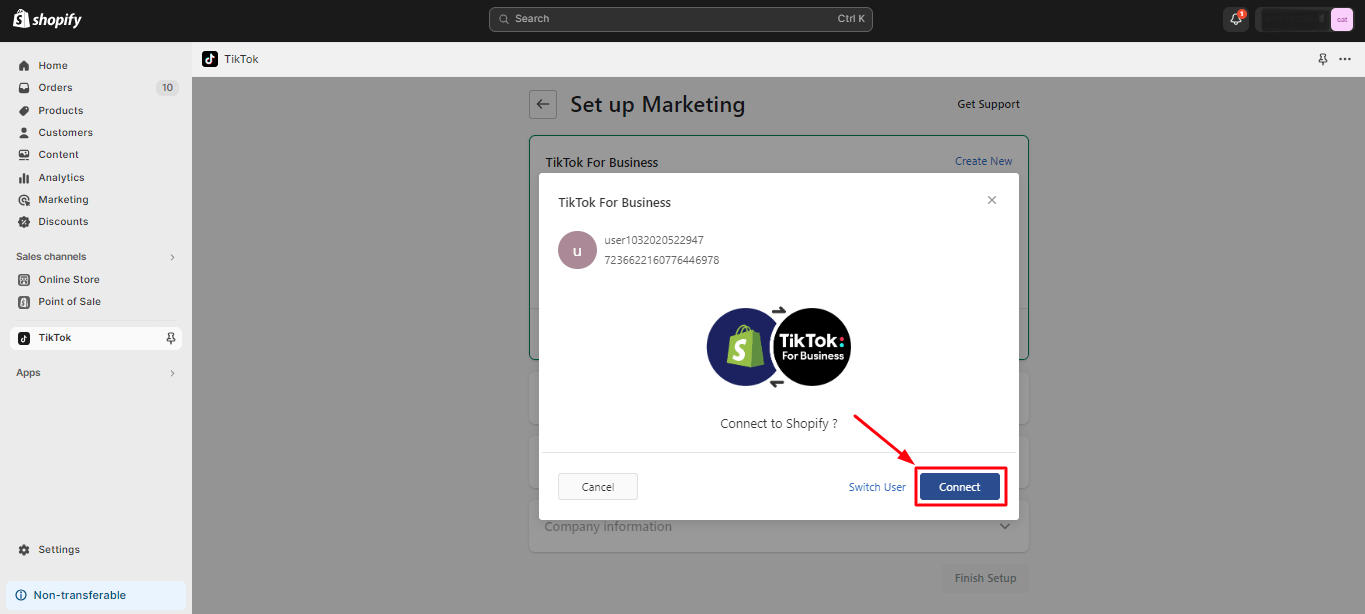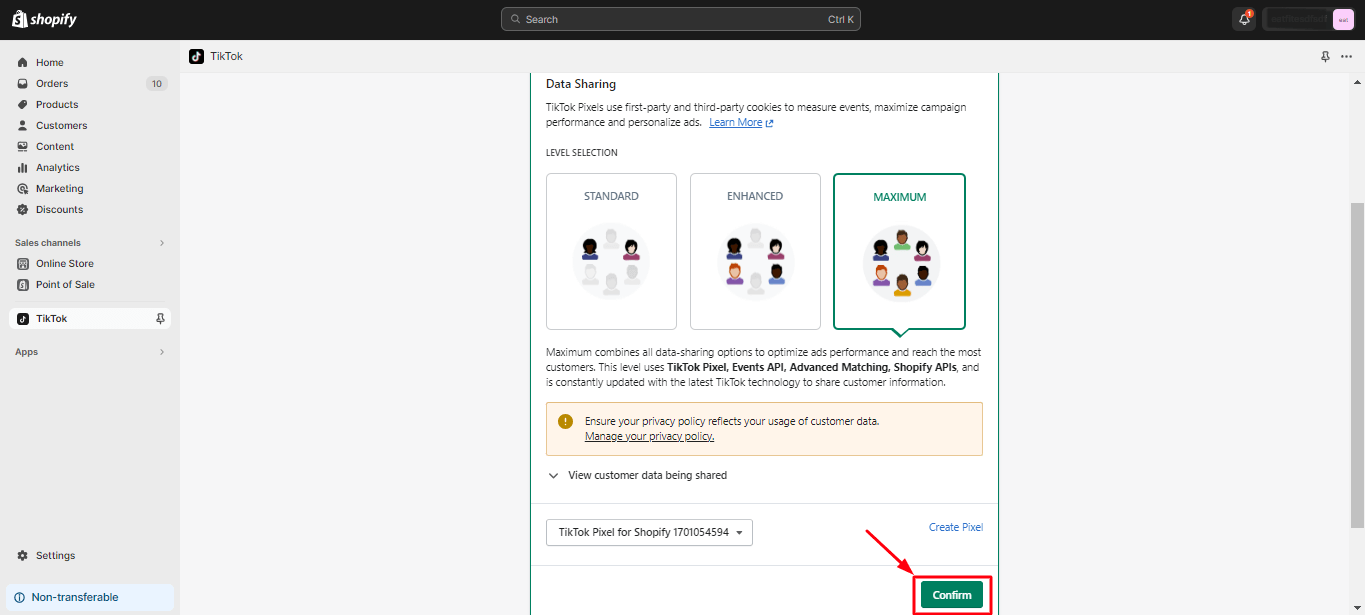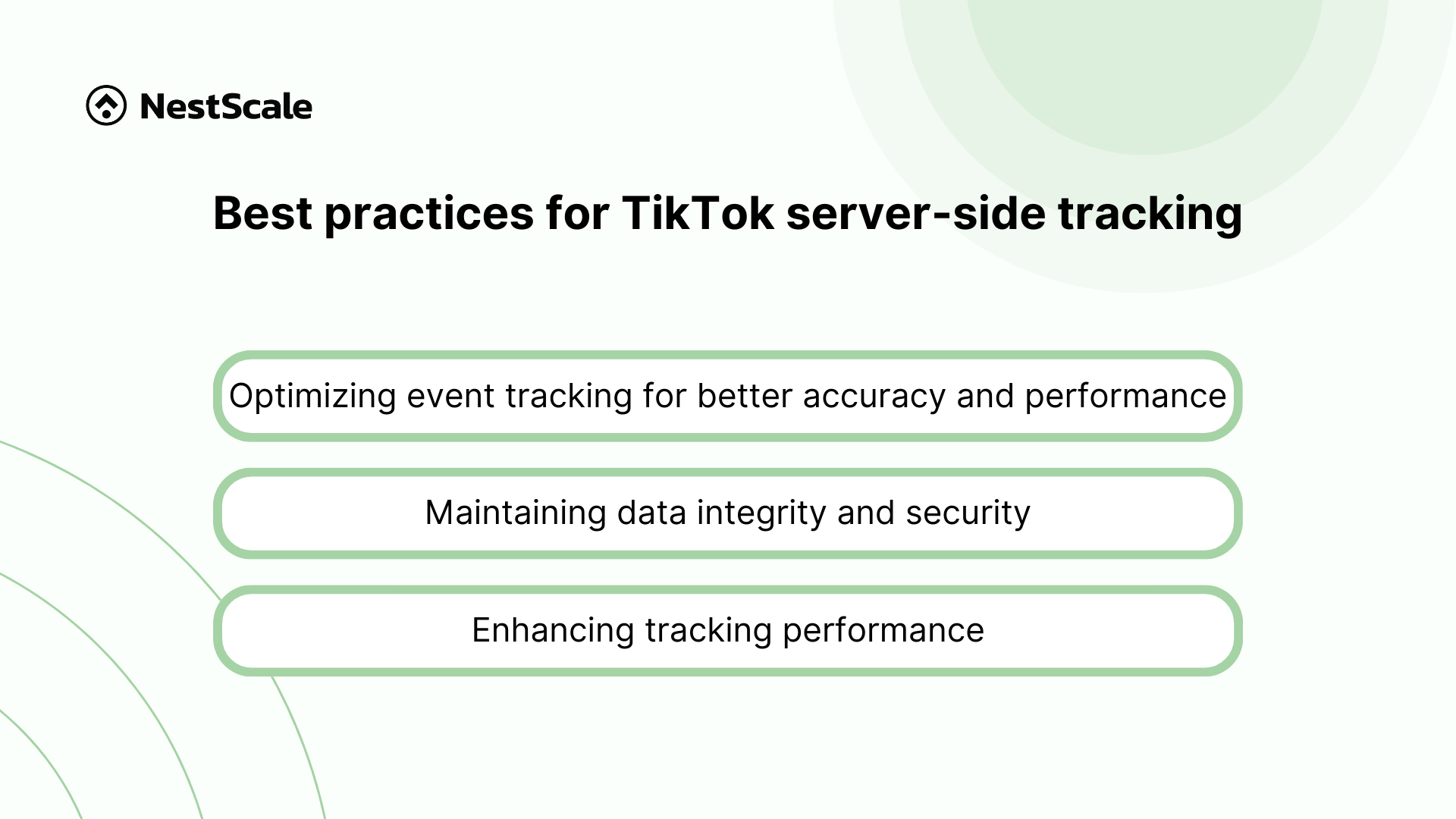TikTok advertising is becoming increasingly popular for e-commerce businesses due to its large user base, cost-effectiveness, and sales-driving effectiveness. In response to this trend, TikTok offers advanced solutions to help businesses enhance and optimize their advertising strategies. Particularly noteworthy in this cookie-less era is TikTok’s server-side tracking solution, specifically the TikTok Events API.
In the previous blog of our server-side tracking series, we explored the intricacies of setting up the Facebook Conversion API, a powerful tool for Shopify merchants. Continuing with our journey to unlock the full potential of server-side tracking for e-commerce platforms, this blog delves into another pivotal option: TikTok Events API. We will guide you with everything you need to know about TikTok server-side tracking: From what is it, its benefits, and how you can utilize it for your Shopify store. Get ready, and let’s dive in!
Understanding TikTok Events API
In this section, let’s explore the TikTok Events API definition and its advantages. TikTok server-side tracking is increasingly critical in a world where browser-based, client-side tracking faces challenges due to privacy regulations and browser restrictions on cookies.
What is TikTok Events API?
At its core, TikTok Events API is a server-to-server connection enabling you to directly share your website data with TikTok. This bypasses the traditional browser-side tracking methods, offering a more reliable and secure way to collect data. The Events API is particularly useful for tracking conversions and user behavior without relying on the TikTok pixel, which operates on the client’s browser.
Setting up TikTok server-side tracking is one of the requirements to use the Web Conversion objective in TikTok Ads Manager, along with using Pixel.
It is great for monitoring your website’s conversion data to enhance TikTok ads, just like TikTok Pixel. But there’s a key difference in how they track the events. Pixel can only track when users load your page on the browser. In contrast, Events API records each event through your server.
For example, with TikTok Pixel, you have to add a snippet code to an action on your website to track data for that action. But there’s a catch – it only works when users activate that action. On the flip side, TikTok Events API is hassle-free. No need to set up anything for actions. Just manually record events through your server, and the data smoothly merges with your server’s existing data.
Benefits of TikTok Events API
TikTok Events API requires more technical expertise from your team than using pixel. It may also use more server capacity. Despite these challenges, it remains a fantastic choice for collecting and analyzing data to fuel a data-driven marketing campaign. Here are the key benefits of TikTok server-side tracking:
- Boost ad delivery and targeting by capturing missing conversions: Pixel is excellent for capturing conversion data, but since it relies on browser-side tracking, the data can be affected by browser inconsistencies and connectivity issues. This means you might miss out on data when these factors act up. Events API, on the other hand, sidesteps these problems by connecting directly to your server data, providing more accurate numbers for ad measurement, optimization, and targeting.
- Improve data security: By allowing you to control which customer information is tracked through your CRM, it offers a safer and more secure method of sharing customer data with TikTok. This is particularly crucial in maintaining compliance with stringent data protection regulations.
- Streamline data: Events API streamlines the flow of data from your CRM to TikTok, eliminating intermediary steps and potential data discrepancies. This direct data transfer ensures that your analyses are more comprehensive and yield much more accurate insights, ultimately enhancing your overall marketing strategy.
- Greater scalability and flexibility: The TikTok Events API is capable of handling large volumes of data efficiently, which is essential for businesses experiencing high traffic volumes and rapid growth. Additionally, the API allows you to define and track custom events that are specific to the actions your customers take on your Shopify store. This flexibility not only covers standard events but also enables deeper insights into unique user behaviors, enhancing your analytical capabilities.
How to set up TikTok Events API?
Now that you’re aware of all the benefits Events API offers for TikTok advertising, let’s dive into the practical steps. In the next part, we provide you with all the information you need to integrate TikTok Events with your website and manage the flow of your conversion event data.
3 ways to implement TikTok Events API
Currently, TikTok allows you to integrate Events API with your server in three ways:
- Commerce Partner Integration: If your website is built through a Commerce Partner like Shopify or WooCommerce, you can set up Events API through TikTok’s Events Manager.
- Data Partner Integration: If you use one of TikTok’s Data partners, like Customer Data Platforms (CDPs), Tag Managers, CRMs, or other marketing technology partners, setting up Events API is done through the partner platform.
- Direct Integration: For more control over your data management, you can set up Events API by dedicating in-house technical resources to follow TikTok Marketing API documentation.
To optimize your ads, TikTok defaults to using both TikTok Events API and TikTok Pixel during setup. This allows you to benefit from the advantages of both integrations. Additionally, since 2022, TikTok has supported deduplication, enabling you to combine web and server tracking for TikTok. Just make sure to add event_id to web and server tags.
Steps to integrate it into your Shopify store
As mentioned earlier, the steps for integrating Events API vary based on the platform you’re using. However, for an e-commerce business, we suggest integrating it through TikTok’s Commerce partner, as it’s more convenient and saves resources. In this section, we guide you through the step-by-step process of how to set up TikTok Events API on Shopify.
Step 1: Creating & configuring your TikTok Pixel
- Create TikTok Business Account: To use the TikTok Events API, you must have an active TikTok Business Account. If you do not have a business account, you can easily convert your existing TikTok account or create a new one on the TikTok business website.
- Log into your TikTok Business Account and access the Ads Manager.
- Go to the Assets -> Event -> Web Event. Here you can manage and create new pixels.
- Click on Create, choose the Web option, and select TikTok Pixel. Name your pixel and specify its use for Web Events. Then, under Connection Method, choose TikTok Pixel -> Next.
- Although you won’t install this pixel directly on your Shopify site, setting it up is essential as it forms the basis for your event tracking.
Step 2: Generating the access token
Within the TikTok Ads Manager under Web Events, find the option to generate an API Key (Access Token).
- When creating the token, you will have the option to configure security settings, such as IP whitelisting, to secure your data transmission.
Step 3: Set up TikTok Events API on Shopify
- First, log in to your Shopify store admin. Then, in the management dashboard, select Apps.
- Next, use the search box to find the TikTok app and install it in your store.
- Then click on Add sales channel to integrate the app into your store.
- Choose Set up Now and finish downloading the app. Now, you can start connecting the Conversion data from your store to TikTok for reporting and advertising.
- After finishing, TikTok will ask you to connect your store to TikTok for Business and TikTok Ads Manager account. This is really crucial, as these two accounts will help you on your advertising journey and report the performance of your ads. Click on Connect.
- Finally, you’ll decide how to share your Conversion events data with TikTok. By default, TikTok suggests using the Maximum mode. This option lets you combine all data-sharing features to optimize ad performance and reach the most customers. With Maximum mode, you’re merging TikTok Pixel, the Access Token you generated in Step 2, advanced matching, Shopify API, and staying updated on the latest TikTok technology to share customer information.
- Click confirm, and there you go! You’ve successfully set up TikTok Events API for your store. Now you can begin reporting and monitoring your advertising efforts.
Step 4: Mapping Shopify events to TikTok events
- Identify which events you want to track, such as Add to Cart, Purchase, or Page View.
- Use the app’s interface to map these Shopify events to the corresponding TikTok events. This process involves linking the actions taken on your Shopify store with the events recognized by TikTok.
- After configuring the events, perform tests to ensure that the events are being captured correctly by TikTok. You can view the status and details of these events in your TikTok Ads Manager.
Step 5: Testing and validation
To ensure your TikTok Events API integration works correctly, it’s crucial to conduct thorough testing and validation:
- Utilize your integration tool’s feature to send test events from Shopify to TikTok. Check in the TikTok Ads Manager to confirm that these events appear correctly.
- Track a real transaction on your store (like a purchase) and verify that this event is captured accurately in TikTok.
- Employ third-party tools designed for API testing to check the responses from TikTok’s servers.
- Compare the event data in TikTok with your Shopify analytics to ensure consistency and accuracy.
Step 6: Troubleshooting common issues
- Keep an eye out for common issues such as missing events, incomplete data fields, or incorrect event values. Each of these could signify configuration errors in your setup.
- Refer to TikTok’s API documentation and the support resources of your chosen Shopify app for guidance on troubleshooting common integration issues.
Best practices for TikTok server-side tracking
Optimizing your TikTok server-side tracking setup is crucial for gaining precise insights into user behavior and enhancing the performance of your advertising campaigns. Here are essential tips and strategies:
Optimizing event tracking for better accuracy and performance
- Prioritize which events to track based on their impact on your marketing goals. Overloading your system with irrelevant data can reduce efficiency and cloud key insights.
- Ensure that data is sent to TikTok in a timely manner. Delays can affect the accuracy of your campaign reporting and optimization.
- Maintain consistency in how events are defined and triggered across different platforms. This consistency helps prevent discrepancies in data interpretation and reporting.
- Filter out noisy or low-quality data that might skew your analytics. Ensuring the data you track is of high quality and relevance enhances decision-making.
Maintaining data integrity and security
- Always use secure methods (like HTTPS) for transmitting data to TikTok to protect it from interception or tampering.
- Conduct regular audits of your tracking setup to ensure compliance with data protection regulations and to update any security measures as needed.
- Implement strict access controls to limit who can view or manipulate the tracking data. This reduces the risk of data breaches and ensures data integrity.
- Make sure your tracking practices comply with relevant privacy laws and regulations, such as GDPR or CCPA. This involves obtaining necessary consents and providing users with transparency about how their data is used.
Enhancing tracking performance
- Regularly monitor the performance of your tracking setup. Use analytics to identify bottlenecks or inefficiencies and address them promptly.
- Establish a feedback loop with your marketing team to continually refine and improve the tracking process based on real-world outcomes and insights.
Implement NestAds for your server-side tracking!
In general, TikTok Events API is a great tool for gathering conversion events data and managing your TikTok ads. However, for a comprehensive view of improving your marketing strategy, we recommend expanding your view to other platforms such as Google and Facebook. In such cases, you’ll benefit from a more comprehensive tool beyond TikTok Ads Manager or TikTok for Business.
Interested in taking your ad tracking to the next level? Enter NestAds – our multichannel ads tracking and marketing attribution tool designed to help you monitor advertising and customer behavior across multiple channels, all managed within one platform. With NestAds, you not only get TikTok support but also gain server-side tracking and a multichannel overview!
NestAds bypasses iOS blockage updates and collects first-party data without relying on cookies to ensure your advertising remains impactful, even as traditional tracking methods face obsolescence. Our comprehensive solution simplifies the complexities of implementing server-side tracking, helping businesses navigate a cookieless environment with ease and maintain a competitive edge.
In our ongoing series on server-side tracking, the next blog will explore the intricacies of setting up Google Ads server-side tracking. Stay tuned!




































